
The Mahabharata, one of the greatest epics of ancient India, has long been considered a mix of mythology, history, and moral teachings. However, numerous archaeological findings over the past century have provided substantial evidence suggesting that events described in the Mahabharata may have historical foundations. Scholars, historians, and archaeologists have conducted extensive research to uncover tangible proof of this ancient epic’s veracity.
1. The Dating of the Mahabharata
The traditional timeline of the Mahabharata war, according to ancient texts, is estimated to have occurred around 3100 BCE. Modern archaeological research, however, suggests a more plausible date between 1500 BCE and 1000 BCE, aligning with the decline of the Indus Valley Civilization and the rise of early Vedic culture. Several scientific methods, such as carbon dating, have been used to analyze artifacts found at sites associated with the Mahabharata.
2. Dwarka – The City of Krishna
One of the most significant archaeological discoveries related to the Mahabharata is the submerged city of Dwarka, believed to be the kingdom of Lord Krishna. Marine archaeological explorations led by the National Institute of Oceanography (NIO) and the Archaeological Survey of India (ASI) have revealed an ancient city submerged off the coast of present-day Dwarka in Gujarat. Key findings include:
- Well-planned structures, fortifications, and grid-like patterns indicative of an ancient urban settlement.
- Pottery, seals, and inscriptions dating back to the 1500 BCE era.
- Evidence of a sudden submergence, possibly due to rising sea levels or a massive flood, as described in the epic.
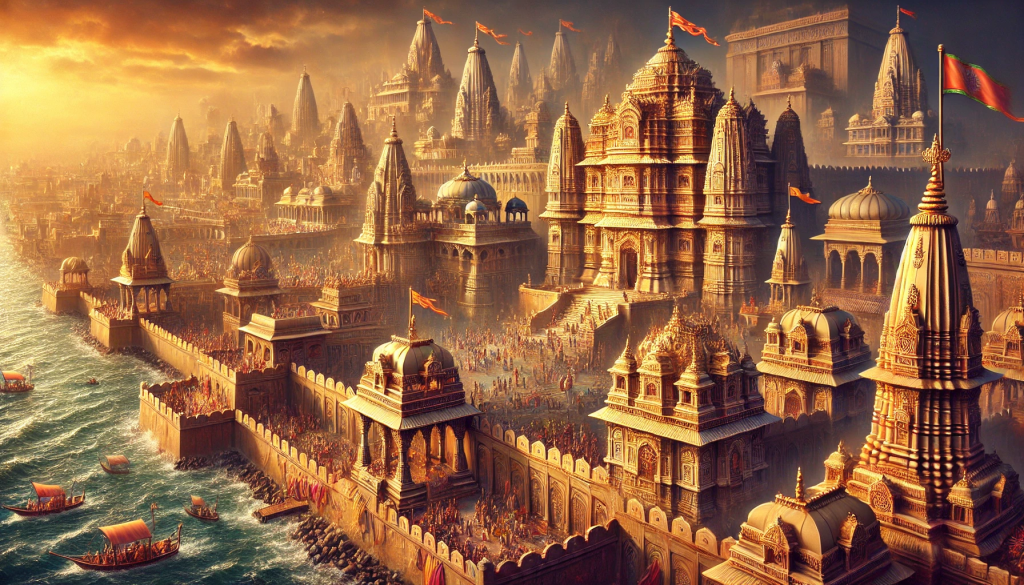
3. The Kurukshetra Battlefield
Kurukshetra, in present-day Haryana, is widely believed to be the site of the great war described in the Mahabharata. Excavations at various locations in and around Kurukshetra have yielded:
- Ancient weapons such as iron arrows, spears, and chariot parts.
- Burial sites with skeletons showing signs of war-inflicted injuries.
- Pottery and inscriptions from the Painted Grey Ware (PGW) culture, which aligns with the estimated period of the Mahabharata.
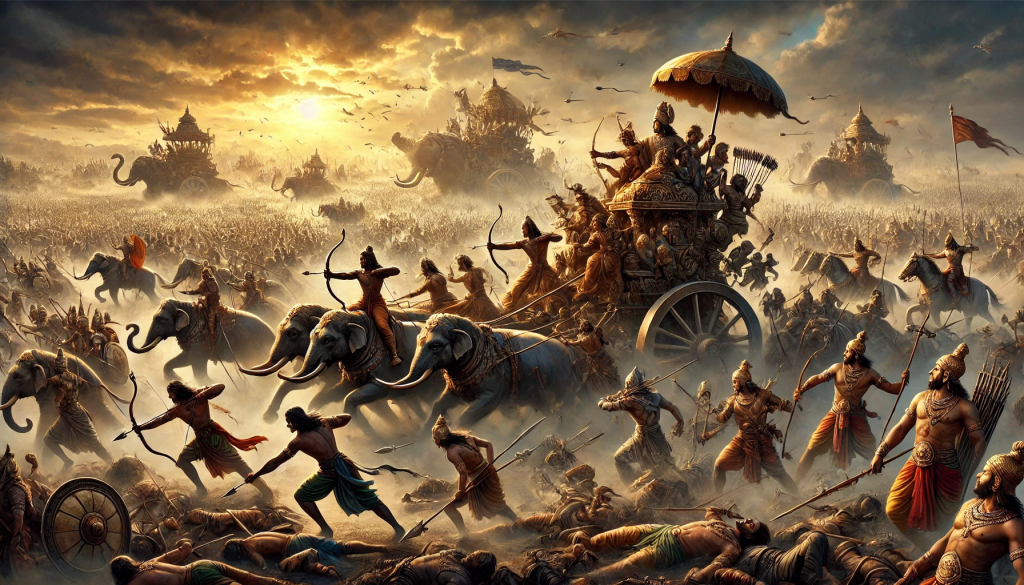
4. Hastinapura – The Capital of the Kuru Dynasty
Hastinapura, mentioned as the capital of the Kuru dynasty in the Mahabharata, has been a focal point of archaeological research. Excavations conducted by B.B. Lal in the 1950s unearthed evidence of settlements dating back to 1200 BCE. Notable discoveries include:
- Remains of fortified structures, mud-brick houses, and drainage systems.
- Terracotta figurines and Painted Grey Ware pottery, associated with the later Vedic period.
- Evidence of flooding, which is consistent with the account in the Mahabharata where the Kuru capital was washed away by the Ganges and later abandoned.
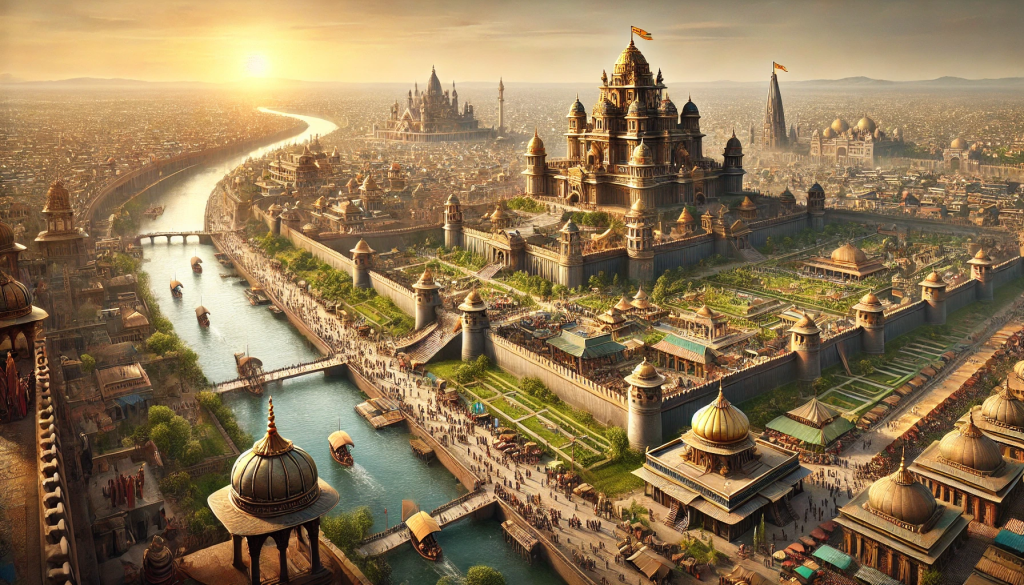
5. The Iron Pillar and Technological Evidence
The presence of highly advanced metallurgy in ancient India is also linked to the Mahabharata era. The Iron Pillar of Delhi, estimated to be over 1,600 years old, showcases advanced iron-working techniques that suggest continuity from earlier technological advancements. While not directly linked to the Mahabharata, it provides insight into the scientific and metallurgical expertise that could have existed during the epic’s timeline.
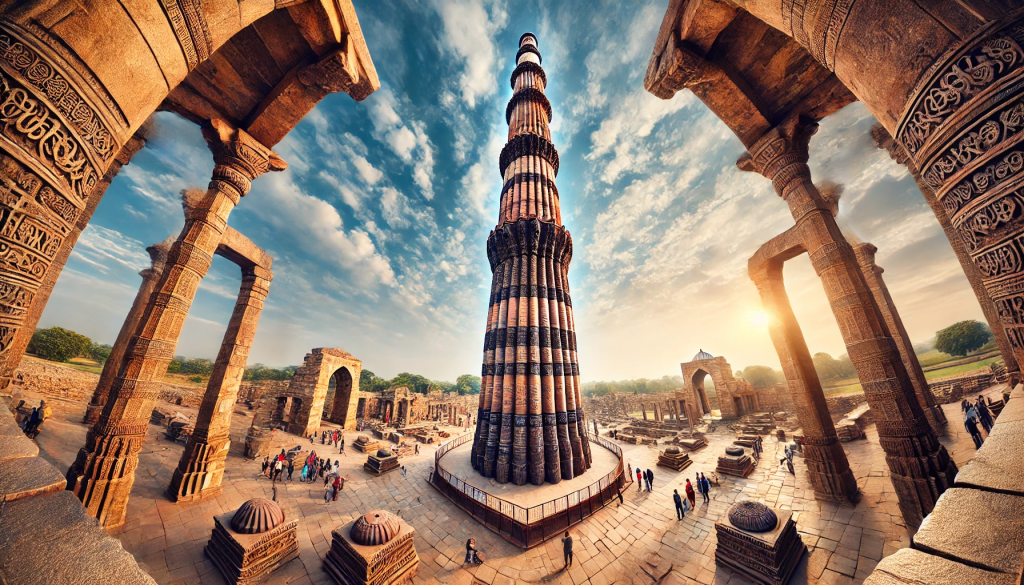
6. Archaeological Evidence in Other Sites
Several other sites across India have revealed artifacts and inscriptions that align with the Mahabharata period:
- Sonipat and Panipat: Findings of chariot tracks and battlefield remnants.
- Mathura: Ancient inscriptions referring to Krishna and his lineage.
- Kunti Nagar (Uttar Pradesh): Pottery and coinage dating back to 1000 BCE, mentioning Vedic rulers.
7. Literary and Epigraphic Corroboration
Apart from physical evidence, numerous ancient texts, including the Mahabharata itself, provide detailed descriptions of cities, rivers, and kingdoms that have been corroborated by archaeology. Ancient Greek and Persian records also mention Indian rulers and wars that bear similarities to the Mahabharata narrative.
Conclusion
While definitive proof of the Mahabharata as a historical event remains elusive, the accumulating archaeological evidence suggests that the epic may be based on real events and places. The discoveries of ancient cities, war relics, and pottery associated with the timeline of the Mahabharata reinforce the idea that the epic has historical underpinnings. Further research and advanced excavation techniques may provide even more clarity in the years to come, bridging the gap between mythology and history.
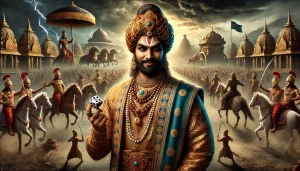
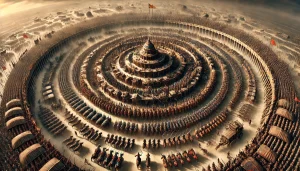
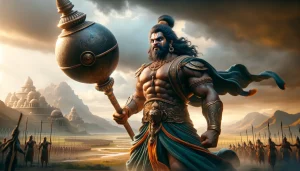
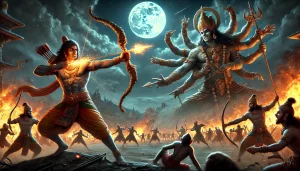

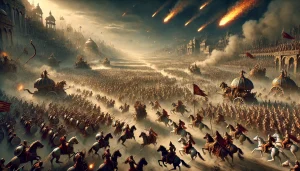
The Mahabharata is indeed a fascinating blend of mythology, history, and moral lessons. It’s intriguing how modern archaeology is shedding light on the historical aspects of this epic, particularly with discoveries like the submerged city of Dwarka and the excavations at Kurukshetra and Hastinapura. The shift in the timeline from 3100 BCE to 1500-1000 BCE seems more plausible, especially with the evidence aligning with the decline of the Indus Valley Civilization. The advanced metallurgy of that era, as seen in the Iron Pillar of Delhi, further supports the idea of a highly developed society. However, I wonder how much of the Mahabharata’s narrative is symbolic or allegorical versus strictly historical. What are your thoughts on the balance between myth and history in this epic?
The Mahabharata has always fascinated me, but the idea that it might have historical roots is even more intriguing. The archaeological findings, especially the submerged city of Dwarka, seem to add a layer of credibility to the epic. It’s amazing how modern science, like carbon dating, is helping us connect the dots between myth and history. The shift in the timeline from 3100 BCE to 1500-1000 BCE makes me wonder how much more we might still be missing. Do you think there’s a possibility that other ancient texts could also have historical truths waiting to be uncovered? The discoveries at Kurukshetra and Hastinapura are equally compelling, but I’m curious—how do you think these findings impact our understanding of Indian history and culture today? The advanced metallurgy of that era, like the Iron Pillar of Delhi, is a testament to the ingenuity of ancient civilizations. What’s your take on how these discoveries might reshape our perception of the Mahabharata—is it more than just a story?